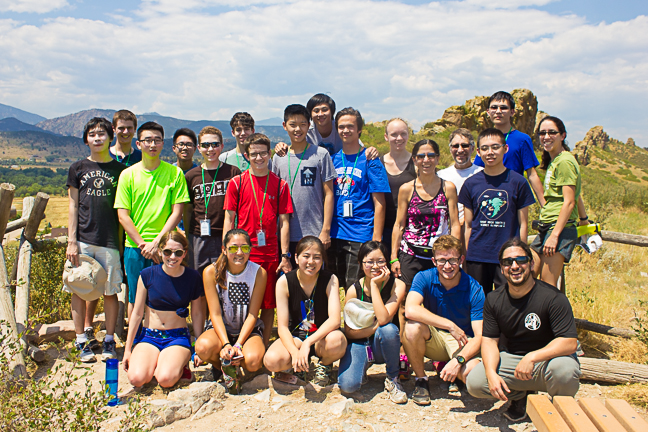
Shifted partitions and the Orthogonal Grassmannian
In a previous post, we discussed Schubert calculus in the Grassmannian and the various intersection problems it can solve. I have recently been thinking about problems involving the type B variant of Schubert calculus, namely, intersections in the orthogonal Grassmanian. So, it’s time for a combinatorial introduction to the orthogonal Grassmannian!
What is the orthogonal Grassmannian?
In order to generalize Grassmannians to other Lie types, we first need to understand in what sense the ordinary Grassmannian is type A. Recall from this post that the complete flag variety can be written as a quotient of $G=\mathrm{GL}_n$ by a Borel subgroup $B$, such as the group of upper-triangular matrices. It turns out that all partial flag varieties, the varieties of partial flags of certain degrees, can be similarly defined as a quotient \[G/P\] for a parabolic subgroup $P$, namely a closed intermediate subgroup $B\subset P\subset G$.
Ellipses, parabolas, and infinity
A parabola can be defined as the locus of points equidistant from a fixed point (called the focus) and a fixed line (called the directrix). But we know from projective geometry that parabolas and ellipses are essentially the same object. Does this mean we can also define an ellipse in terms of a point and a line?
While tutoring a high school student recently, we worked through a problem that was essentially showing just that in a special case. Remarkably:
An ellipse can be defined as the locus of points $P$ for which the distance $|PF|$ to a focus $F$ is $\alpha$ times the distance from $P$ to a fixed line $\ell$ for some positive real number $\alpha\lt 1$.
Halloween Candy and Counting
Happy Halloween! It’s that time of year in which we celebrate ghosts, pumpkins, and fear itself. So, what better time to discuss a very common fear among adults these days: Mathematics!
If you’re reading this blog, I’m guessing you’re probably already not too afraid of mathematics. But I hope you share this post with people who are somewhat spooked by it but like to face their fears now and then. And let’s face it, even for math lovers, every difficult-sounding math problem is always a little scary at first… until you work it out and realize that there’s only beauty behind the mask.
I recently made up the following problem for a friend teaching a discrete mathematics class:
Five kids, dressed as a Ghost, a Witch, a Monster, a Skeleton, and a Black Cat, knock at your door. You open it and welcome them in, but you realize you only have $3$ Snickers bars and $3$ Kit Kats left in your candy stash!
Since you have $6$ pieces of candy and there are only $5$ kids, you decide to give both a Kit Kat and a Snickers bar to the scariest costume, and then give the remaining four kids one piece each. How many different ways can you choose who to give what candy to?
The structure of the Garsia-Procesi modules $R \mu$
Somehow, in all the time I’ve posted here, I’ve not yet described the structure of my favorite graded $S_n$-modules. I mentioned them briefly at the end of the Springer Correspondence series, and talked in depth about a particular one of them - the ring of coinvariants - in this post, but it’s about time for…
The Garsia-Procesi modules!
Can you Prove it... combinatorially?
This year’s Prove it! Math Academy was a big success, and it was an enormous pleasure to teach the seventeen talented high school students that attended this year. Some of the students mentioned that they felt even more inspired to study math further after our two-week program, but the inspiration went both ways - they inspired me with new ideas as well!
One of the many, many things we investigated at the camp was the Fibonacci sequence, formed by starting with the two numbers $0$ and $1$ and then at each step, adding the previous two numbers to form the next: \[0,1,1,2,3,5,8,13,21,\ldots\] If $F_n$ denotes the $(n+1)$st term of this sequence (where $F_0=0$ and $F_1=1$), then there is a remarkable formula for the $n$th term, known as Binet’s Formula:
\[F_n=\frac{1}{\sqrt{5}}\left( \left(\frac{1+\sqrt{5}}{2}\right)^n - \left(\frac{1-\sqrt{5}}{2}\right)^n \right)\]
Looks crazy, right? Why would there be $\sqrt 5$’s showing up in a sequence of integers?
